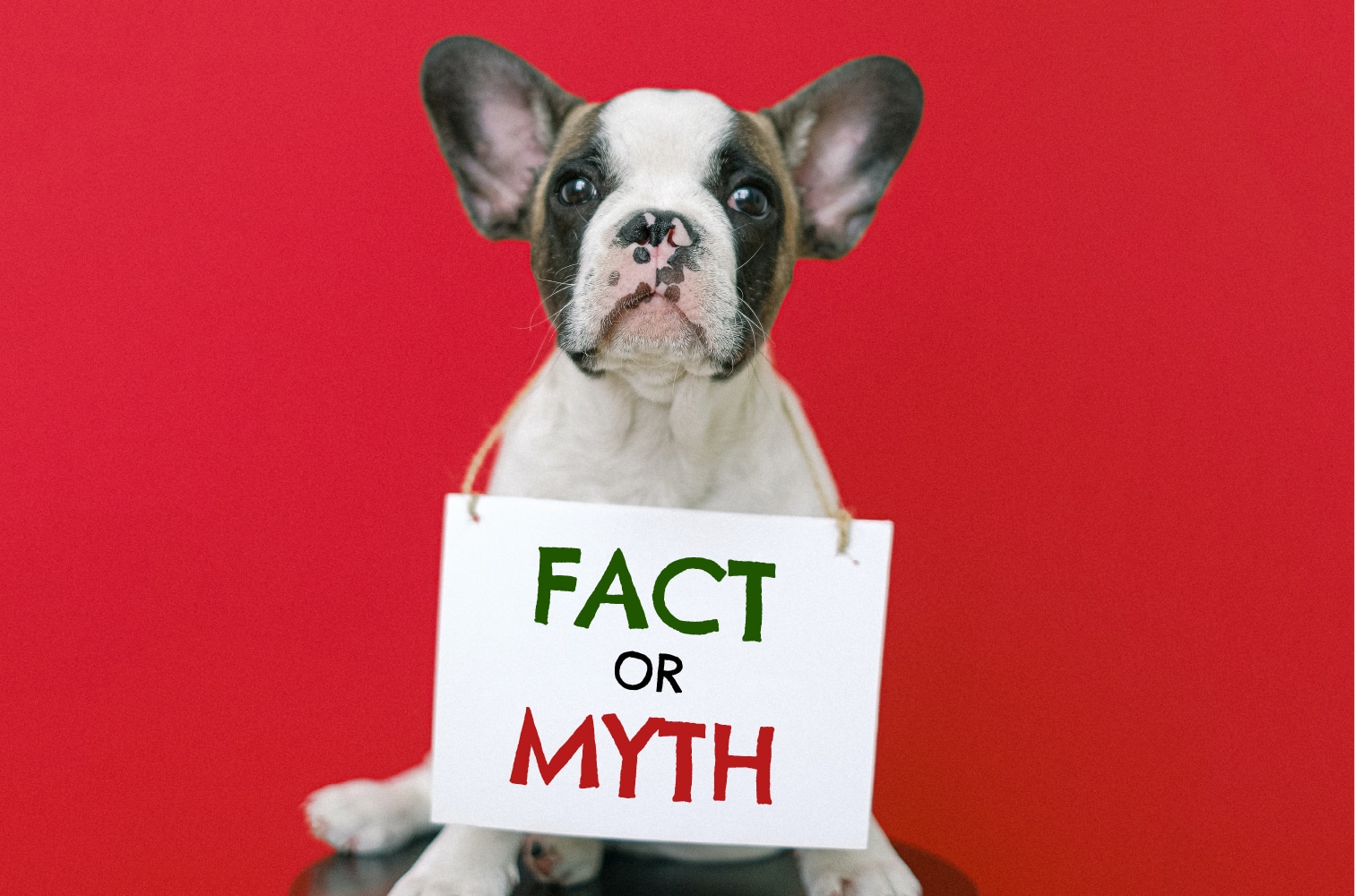There are so many myths regarding pets, and it can be difficult to know what is factual and what is misinformation. In this blog, we will cover and debunk some commonly misunderstood dog myths involving pet care.
My Dog is Too Young for Grooming
This is a dog myth that we hear many times a week. We recommend bringing your puppy in for their first grooming session when they are around eight weeks old. However, we do not recommend giving a puppy a haircut until they are at least six months old.
Getting your puppy groomed early and often is the best way to set your pup up for success. Read this blog to learn more about why we suggest bringing in your puppy for grooming at eight weeks old, along with tips for how to prepare them and reduce their anxiety before their first appointment.
Want to learn more about grooming frequency for adult dogs? Check out this blog for our recommendations based on your dog’s breed.
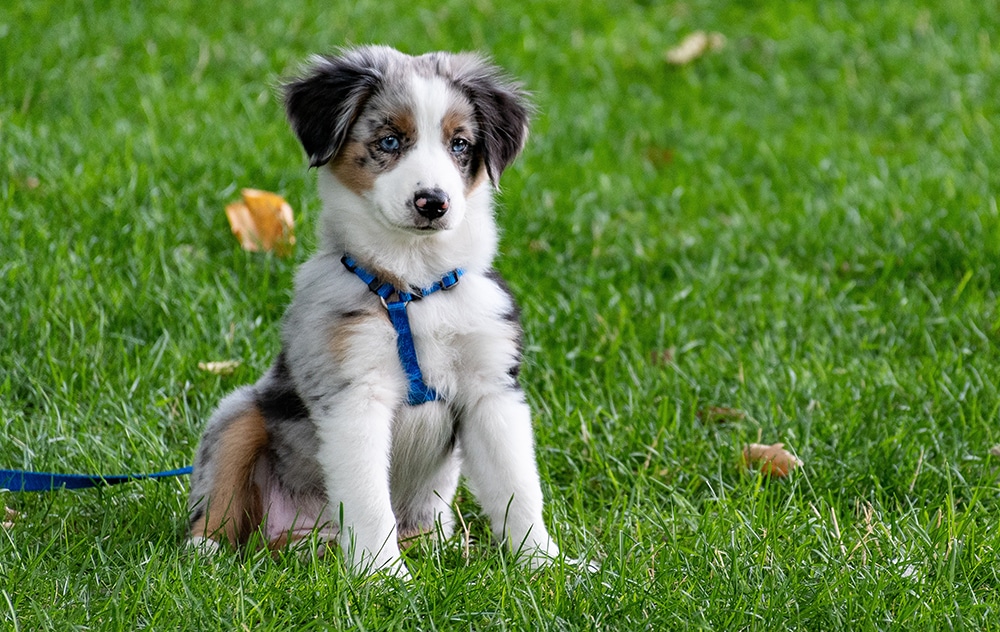
Grooming Doodles
Many Doodle breeders advise owners to not get their dogs groomed until they are 6 months or even a year old. If you wait this long, your dog will be terrified of the local grooming salon. Getting your puppy groomed early and often is the best way to set your pup up for success.
“You’ll ruin a Doodle’s coat if you groom them too early” – this is a complete myth. Your dog’s coat will not be damaged. Do not be surprised if the hair that grows back after shaving a puppy coat is less soft and fluffy as before, however. This is completely normal, and is a result of your Doodle puppy transitioning away from their puppy coat.
The divide between Doodle owners and pet groomers: Many Doodle owners want groomers to stop making their dogs look like poodles, and groomers want Doodle owners to understand that their dogs need to be brushed and groomed more frequently than most other dog breeds.
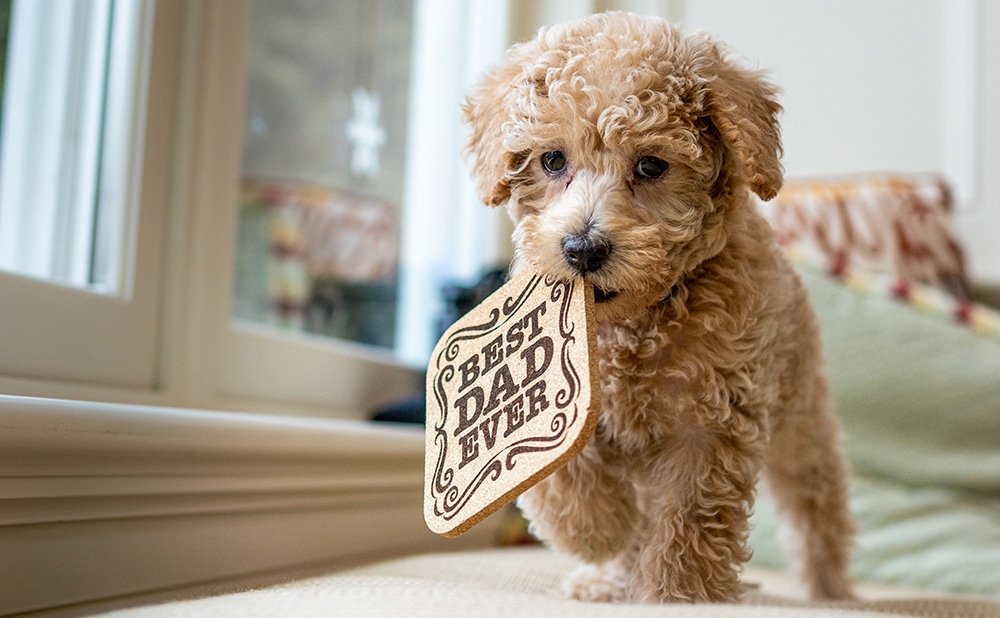
A Wet Nose Means Your Dog is Healthy
A dog’s nose doesn’t necessarily need to be wet to be healthy. Dogs with dry noses can be healthy as well, while sick dogs can also have wet noses. Your dog’s nose temperature and moistness can be indicators of their activity level, environment and other factors, not necessarily indicators of your dog’s health.
When checking your pet’s nose, ensure it is not cracked. A dry, cracked nose can be painful and could also indicate other issues. Read this blog for more on dry, cracked noses.
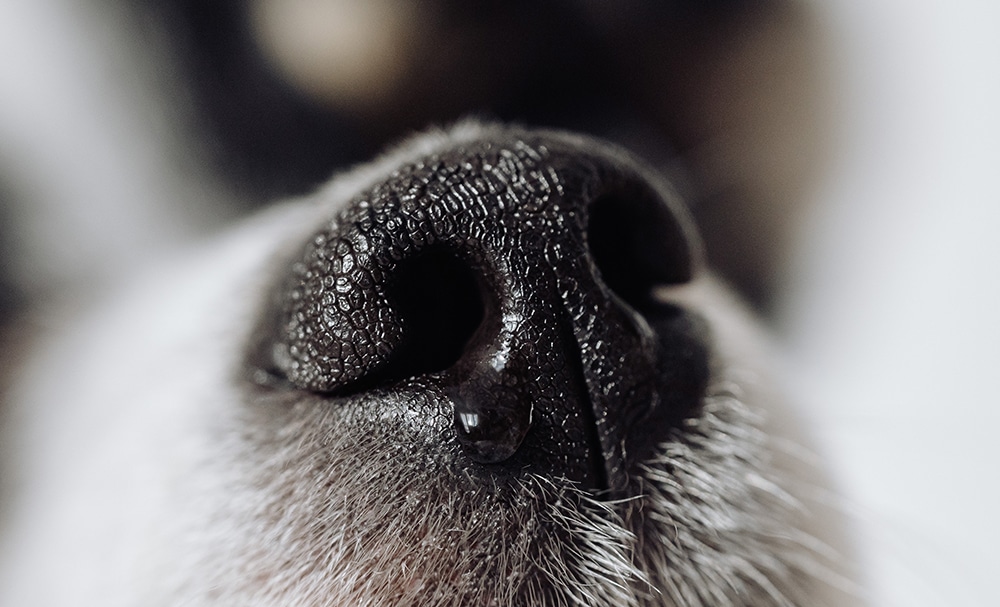
Garlic Prevents Dog Fleas
The simple answer to this is no, garlic will not prevent your dog from getting fleas. Unfortunately the only way to effectively prevent your pet from becoming infested with fleas is to use a systemic flea preventative from your veterinarian.
It is true that in large quantities garlic can repel fleas. Mint is also a great repellent, as fleas hate the scent. There are also several shampoos that have a mint or eucalyptus base that can assist in repelling fleas.

Dogs Only See in Black and White
It is an old wives’ tale that dogs only see in black and white. Dogs can see in color. They see mostly in the blue spectrum, but can see other colors as well.
While human eyes have three types of cones, dogs only have two types of cones. This prevents them from seeing the full spectrum of colors most humans see. Instead, a dog’s vision is similar to a person who is red-green color blind – they can discern blue and yellow, though red items will appear gray or brown.
Other interesting facts about canine eyes: dogs have better night vision due to their larger lens, corneal surface and reflective membrane. A dog’s vision is also a bit blurry, and they see in less detail than humans. For more on the science behind canine vision, view this article by the American Kennel Club.
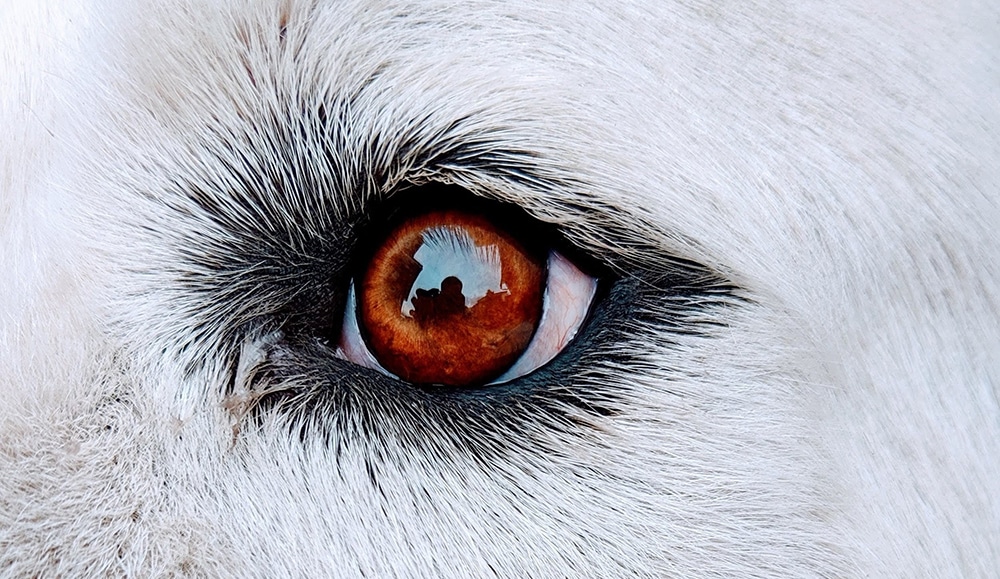
Dogs Need all Hair in their Ears Completely Plucked Out
Long-coated dogs grow hair inside of their ear canal. Some veterinarians and pet groomers believe that all hair should be plucked from the canal to prevent ear infections, while some believe it’s better to leave hair in the ears to keep moisture out and prevent ear infections.
Either way, the goal is to prevent ear infections. The best option is to pluck about half of the hair and gently clean with a pet safe ear cleaner. Your dog groomer can also shave some of the hair out of the ears to avoid any unnecessary pain.
Not sure whether your dog’s ear hair should be plucked? Ask your veterinarian or local dog groomer for advice based on your pet’s specific breed and condition.
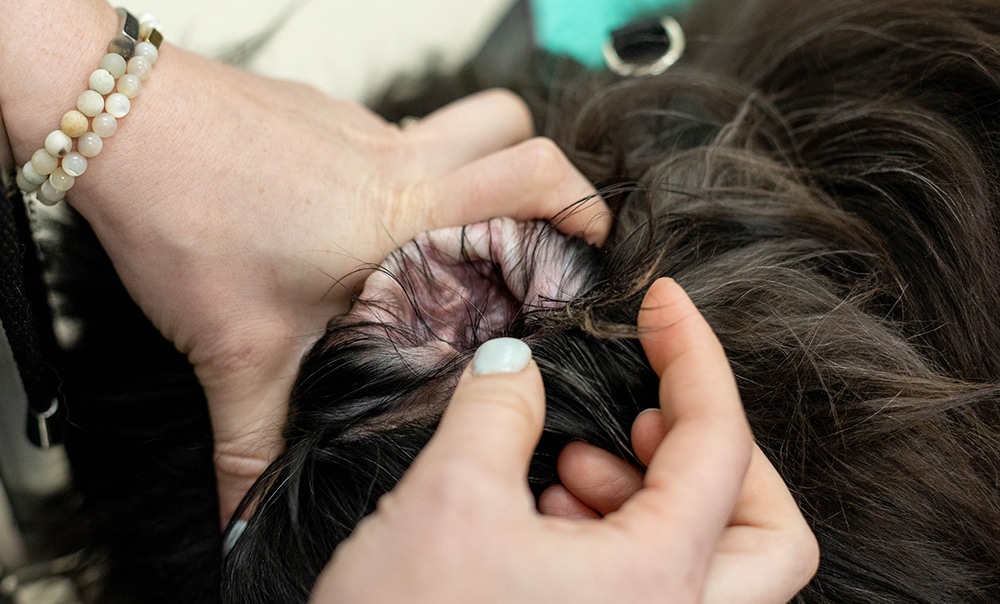
A Wagging Tail Means a Dog is Happy
It’s always fun to come home to that sweet pup wagging its tail and giving smooches. However, while a wagging tail can indicate your pet is happy, it can also mean it’s uneasy.
Not all dogs are easy going and confident. Some, for example, are nervous around small children. If a dog has never been around children it can be easy to misread its body language. If you see a wagging tail, look at other signs of stress.
Possible signs to look for include drooling, pinned back ears, yawning and blinking. The pet may also lift a paw off the ground or turn their head or body away. Always pay attention closely to an animal’s body language and exercise caution when first introducing it to children.
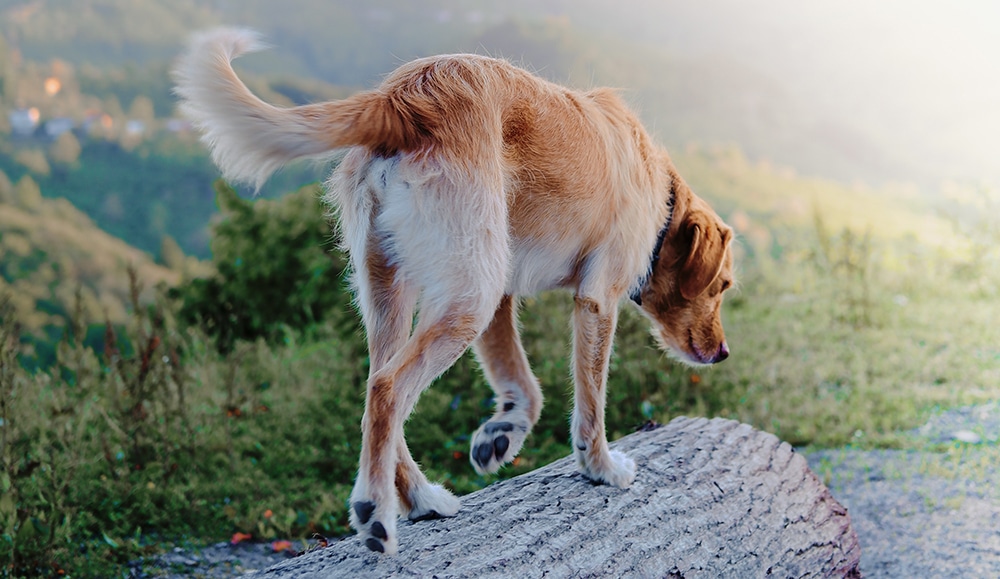
Water is a Good Tool for Correction
Dog trainers used to utilize spray bottles filled with water to prevent pets from undesirable behaviors like jumping or barking. The problem with this, other than the fact that it is negative reinforcement, is that it directly translates to grooming.
If your pet associates water with negativity, it may likely learn to hate anything to do with it. When bathing these dogs, they can become extremely fearful or even aggressive.
Looking for other tools to use for correcting your dog’s behaviors? Try out some of the tips in this blog about dog training.

Rub a Dog’s Nose in Urine to Punish them for Having Accidents
If you rub your puppy’s nose in its pee and yell at it, you will only succeed in confusing your dog. As a result, your pet may learn to fear you or even hide when they feel the urge to relieve themselves.
The best way to potty train your puppy or older dog is to take them outside often. Puppies need more frequent visits outdoors, potentially even as often as every two hours, and especially after waking up, eating or drinking.
Picking a particular location outside for potty training is also a good idea, as well as rewarding your pet for going potty where you want them to. They will soon correlate the two.
In general, all dogs want to please their owners. If your pet understands that you are happy with their behavior, they are more likely to continue the behavior.
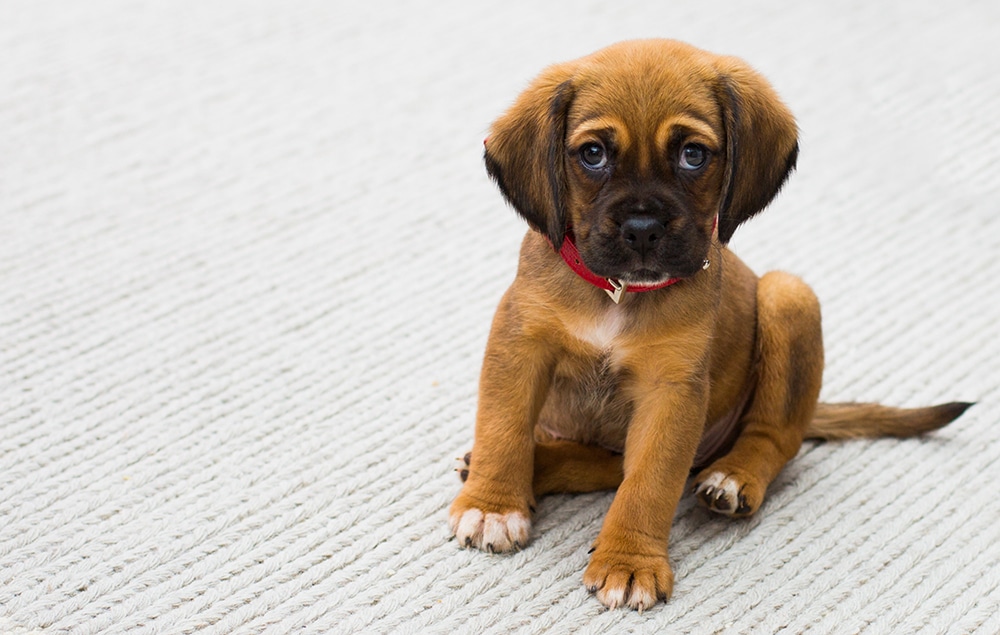
You Should Help Your Dog Express Their Anal Glands Frequently
In the wild, a dog’s anal glands are expressed naturally by the dog, usually when it is scared, but also when the animal eliminates. The secretions leave a foul odor that predators would rather steer clear of. Today, some dogs need help with this but not all.
Large dogs, because of their anatomy, typically will express their anal glands naturally when they go potty. Small dogs – and occasionally large dogs – need theirs expressed. A groomer or veterinarian can help with this. Vets perform the process internally while groomers do it externally.
How often should I have my dog’s anal glands expressed? This depends on your dog. Some need them done every 4-6 weeks, and some can go months in between. If your pet is scooting on the floor or licking and chewing at its rear, it may be a good indication that the anal glands need to be checked.
If you’re unsure about the signs or need help regarding anal gland expression frequency for your pet, your local dog groomer can help provide guidance.
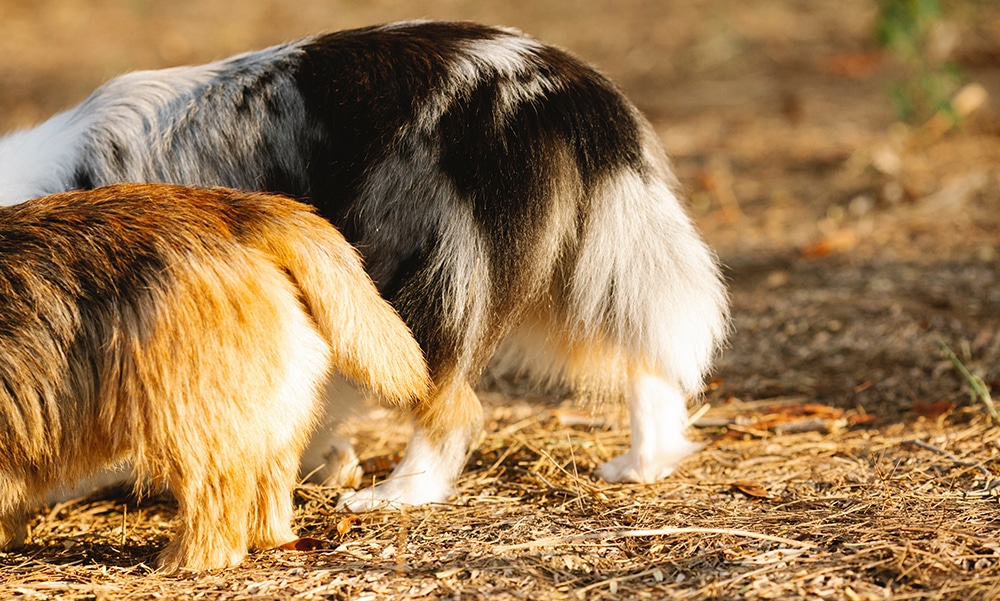
Vets Just Want My Money… My Dogs Teeth Aren’t Even Dirty
While veterinarians do “make money” on dental procedures and other services they provide, it’s unfair to assume that’s their motivation for suggesting dental care for your pet. Veterinarians get into the business to help pets, not to make money.
Canine dental disease is a real thing and it can lead to other medical problems with your pet. Not to mention – if your pet has sore teeth and gums, it could become very ill in a short period of time due to lack of eating or drinking.
If your vet recommends dental care for your pet, please consider getting their teeth cleaned professionally. There are many things we can’t see just by looking at our pets’ teeth that the vet may be able to see.
Our advice at Smoochie Pooch is to take steps for your dog’s teeth and mouth health before problems arise. Save the expensive veterinarian bill by regular teeth brushing and other tips for your dog’s mouth health.
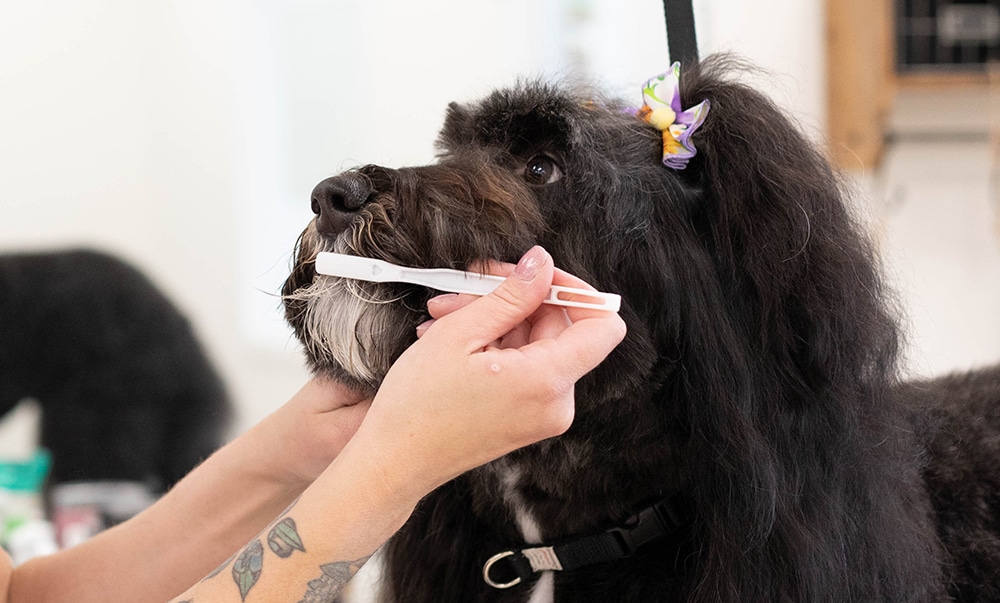
Questions?
Have questions regarding any of the myths in this blog? Ask your local Smoochie Pooch pet groomer – they’ll be happy to help!


